 AyiConnect Staff, Nov 01, 2023
AyiConnect Staff, Nov 01, 2023
|
Read 59 minutes ago
|
2181
Latin American cuisine, a melting pot of rich and diverse culinary traditions, offers endless flavors that tell a story of cultural fusion, historical influences, and indigenous ingredients. This cuisine, which spans the vast region of Latin America, encompasses the traditional dishes and cooking techniques of countries where Spanish is predominantly spoken.
This article will discover unique and mouthwatering dishes that define Latin American cuisine. From Argentina's robust barbecues to the tropical flavors of the Caribbean, each segment of this article will delve into the gastronomic delights of different regions, offering a taste of Latin America's vibrant and varied food landscape.
Come along on a tasty adventure with us as we explore the flavors of Latin American food.
The Culinary Delights of Argentina and Bolivia
- Argentina: Fiesta For The Soul
Asado reigns supreme, fire-kissed meats dripping with tangy chimichurri. Empanadas burst with savory secrets, gooey provoleta dances on the grill, and corn whispers in humita. Beyond the grill, thick-crust pizza struts its stuff, dulce de leche paints desserts creamy joy, and yerba mate fuels vibrant gatherings.
-
Roast: The Asado Tradition
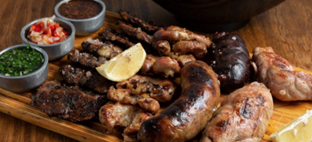 In the realm of Latin American cuisine, Argentina stands out for its legendary asado or barbecue. Asado isn't just a cooking method; it's an integral part of Argentine culture, symbolizing community and tradition. The centerpiece of this culinary ritual is beef, cooked to perfection on a grill or open fire, infusing the meat with a distinctive smoky flavor that is the hallmark of Argentine cuisine. This communal cooking and dining experience underscores the social nature of Latin American cuisine, making the asado a perfect embodiment of the region's gastronomic ethos.
In the realm of Latin American cuisine, Argentina stands out for its legendary asado or barbecue. Asado isn't just a cooking method; it's an integral part of Argentine culture, symbolizing community and tradition. The centerpiece of this culinary ritual is beef, cooked to perfection on a grill or open fire, infusing the meat with a distinctive smoky flavor that is the hallmark of Argentine cuisine. This communal cooking and dining experience underscores the social nature of Latin American cuisine, making the asado a perfect embodiment of the region's gastronomic ethos.
-
Yerba Mate: Argentina's Social Beverage
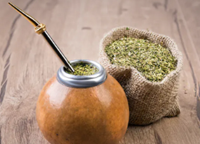 Another cornerstone of Argentine culinary culture is Yerba Mate. Yerba Mate isn't just a beverage; it's a historical social tradition embraced throughout Latin America. Consumed from a shared gourd with a metal straw, it symbolizes hospitality and community – key aspects of Latin American cuisine. The preparation of this caffeinated infusion reflects the communal spirit, a recurring theme in Latin American dining traditions.
Another cornerstone of Argentine culinary culture is Yerba Mate. Yerba Mate isn't just a beverage; it's a historical social tradition embraced throughout Latin America. Consumed from a shared gourd with a metal straw, it symbolizes hospitality and community – key aspects of Latin American cuisine. The preparation of this caffeinated infusion reflects the communal spirit, a recurring theme in Latin American dining traditions.
-
Bolivia: A Blend of Cultures in Cuisine
With its rich indigenous heritage and Spanish influences, Bolivia offers a distinct flavor to Latin American cuisine. The country's diverse geography, from high Andean plains to lush Amazonian forests, is mirrored in its multifaceted culinary traditions, showcasing the adaptability and creativity of Latin American cuisine.
- Anticucho: A Street Food Staple
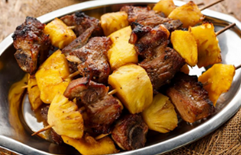 A prime example of this is Anticucho, a popular Bolivian street food. This dish, typically made with grilled skewered meat, often beef heart, is served with a spicy peanut sauce. Anticucho illustrates the fusion of indigenous and Spanish culinary traditions, a hallmark of Latin American cuisine, where simplicity and flavor collide to create dishes that are both accessible and delicious.
A prime example of this is Anticucho, a popular Bolivian street food. This dish, typically made with grilled skewered meat, often beef heart, is served with a spicy peanut sauce. Anticucho illustrates the fusion of indigenous and Spanish culinary traditions, a hallmark of Latin American cuisine, where simplicity and flavor collide to create dishes that are both accessible and delicious.
- Humitas: Bolivia's Corn Delicacy
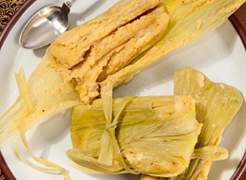 Humitas, a Bolivian dish made from corn, is another example of the indigenous influence on Latin American cuisine. Like Mexican tamales, Humintas are savory or sweet cakes made from fresh corn dough, often combined with cheese or other fillings, and wrapped in cornhusks. This dish emphasizes the significance of corn in Latin American culinary customs, demonstrating the region's dependence on indigenous crops and its skill in turning basic ingredients into delicious culinary creations.
Humitas, a Bolivian dish made from corn, is another example of the indigenous influence on Latin American cuisine. Like Mexican tamales, Humintas are savory or sweet cakes made from fresh corn dough, often combined with cheese or other fillings, and wrapped in cornhusks. This dish emphasizes the significance of corn in Latin American culinary customs, demonstrating the region's dependence on indigenous crops and its skill in turning basic ingredients into delicious culinary creations.
Savoring the Diverse Flavors of Colombia, Chile, and Costa Rica
- Colombia: A Melting Pot of Flavors
Colombian cuisine, a vibrant part of Latin American cuisine, is as diverse as its landscape. Here, every dish tells a story of cultural fusion and regional diversity.
- Bandeja Paisa: Colombia’s Hearty Platter
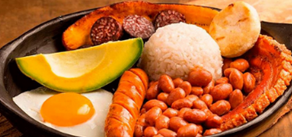 Take Bandeja Paisa, for instance. This hearty platter is a medley of flavors and textures, featuring staples like rice, beans, chorizo, avocado, and fried plantain. It's a culinary snapshot of Colombia’s rich agricultural heritage, where each ingredient plays a vital role in creating a balanced and satisfying meal.
Take Bandeja Paisa, for instance. This hearty platter is a medley of flavors and textures, featuring staples like rice, beans, chorizo, avocado, and fried plantain. It's a culinary snapshot of Colombia’s rich agricultural heritage, where each ingredient plays a vital role in creating a balanced and satisfying meal.
- Ajiaco: A Comforting Staple
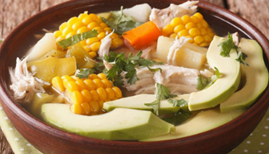 Ajiaco, a traditional Colombian soup, is another testament to the country's culinary ingenuity. Made with three types of potatoes, chicken, corn, capers, and a dash of guascas (a local herb), this soup is more than just comfort food; it's a warm embrace of Colombian tradition and a perfect example of how Latin American cuisine often turns simple ingredients into something extraordinary.
Ajiaco, a traditional Colombian soup, is another testament to the country's culinary ingenuity. Made with three types of potatoes, chicken, corn, capers, and a dash of guascas (a local herb), this soup is more than just comfort food; it's a warm embrace of Colombian tradition and a perfect example of how Latin American cuisine often turns simple ingredients into something extraordinary.
-
Chile: Land of Bold Flavors
Chilean cuisine, an integral part of Latin American cuisine, is known for its bold flavors and inventive use of local produce.
- Chilean Salad: Simplicity at Its Best
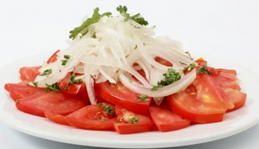 A Chilean-style salad, for instance, is simplicity at its best. Just ripe tomatoes and thinly sliced onions, seasoned with salt and cilantro, can transform any meal. This salad is a testimony to the Chilean way of life - unpretentious yet full of flavor, reflecting the country's rich agricultural bounty.
A Chilean-style salad, for instance, is simplicity at its best. Just ripe tomatoes and thinly sliced onions, seasoned with salt and cilantro, can transform any meal. This salad is a testimony to the Chilean way of life - unpretentious yet full of flavor, reflecting the country's rich agricultural bounty.
- Picante de Guatitas: A Flavorful Adventure
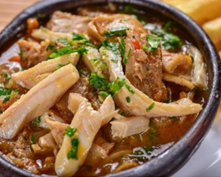 Picante de Guatitas, a dish featuring tripe cooked with onions, potatoes, and spices, is a bold foray into traditional Chilean flavors. It's a dish that challenges the palate and rewards the adventurous eater with a rich blend of textures and spices, epitomizing the innovative spirit of Latin American cuisine.
Picante de Guatitas, a dish featuring tripe cooked with onions, potatoes, and spices, is a bold foray into traditional Chilean flavors. It's a dish that challenges the palate and rewards the adventurous eater with a rich blend of textures and spices, epitomizing the innovative spirit of Latin American cuisine.
-
Costa Rica: A Tropical Culinary Haven
In Costa Rica, the natural bounty of the tropics plays a central role in its contribution to Latin American cuisine, with dishes that are as colorful as they are flavorful.
-
Gallo Pinto: The National Dish
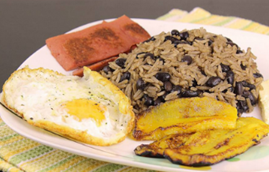 Gallo Pinto, Costa Rica's national dish, is a testament to the universal appeal of simple, well-prepared food. This humble yet delicious mix of rice and beans, often served with eggs or plantains, is a staple at Costa Rican tables, showcasing how basic ingredients can be transformed into a nourishing and satisfying dish.
Gallo Pinto, Costa Rica's national dish, is a testament to the universal appeal of simple, well-prepared food. This humble yet delicious mix of rice and beans, often served with eggs or plantains, is a staple at Costa Rican tables, showcasing how basic ingredients can be transformed into a nourishing and satisfying dish.
- Casado: A Marriage of Flavors
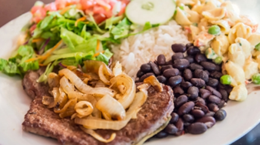 Casado, another Costa Rican favorite, beautifully illustrates the flavor harmony that characterizes Latin American cuisine. This plate combines rice, beans, salad, fried plantains, and a choice of protein, creating a balanced and wholesome meal that is both a feast for the eyes and a delight for the palate.
Casado, another Costa Rican favorite, beautifully illustrates the flavor harmony that characterizes Latin American cuisine. This plate combines rice, beans, salad, fried plantains, and a choice of protein, creating a balanced and wholesome meal that is both a feast for the eyes and a delight for the palate.
Delving into the Culinary Essence of Cuba, El Salvador, and Spain
-
Cuba: A Fusion of History and Taste
Cuban cuisine, a key component of Latin American cuisine, tells a story of historical influences and cultural resilience through its flavorful dishes.
-
Ropa Vieja: Cuba's Comforting Classic
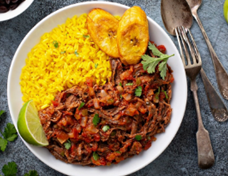 Ropa Vieja, literally translating to 'old clothes,' is a Cuban classic. This dish, with its shredded beef simmered in a rich tomato-based sauce, seasoned with onions, bell peppers, and a mix of spices, is a testament to Cuba's ability to turn simple ingredients into a culinary masterpiece. It embodies the spirit of Latin American cuisine, where flavors from various cultures blend seamlessly to create something uniquely delightful.
Ropa Vieja, literally translating to 'old clothes,' is a Cuban classic. This dish, with its shredded beef simmered in a rich tomato-based sauce, seasoned with onions, bell peppers, and a mix of spices, is a testament to Cuba's ability to turn simple ingredients into a culinary masterpiece. It embodies the spirit of Latin American cuisine, where flavors from various cultures blend seamlessly to create something uniquely delightful.
- Ajiaco Cubano: A Flavorful Melange
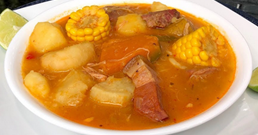 Ajiaco Cubano is another Cuban specialty that showcases the diversity of Latin American cuisine. This thick, hearty stew combines dried meat, various tubers, and spices into a nourishing and flavorful dish. It's a perfect example of how traditional recipes are maintained and adapted over generations, keeping the culinary heritage alive.
Ajiaco Cubano is another Cuban specialty that showcases the diversity of Latin American cuisine. This thick, hearty stew combines dried meat, various tubers, and spices into a nourishing and flavorful dish. It's a perfect example of how traditional recipes are maintained and adapted over generations, keeping the culinary heritage alive.
-
El Salvador: Rich in Tradition and Taste
El Salvador may be small, but its contribution to Latin American cuisine is significant, offering dishes rich in flavor and steeped in tradition.
- Pupusas: El Salvador's Stuffed Delight
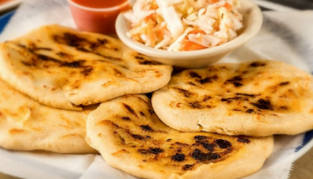 Pupusas, the national dish of El Salvador, are thick corn tortillas stuffed with a blend of cheese, beans, or meats. Cooked to a golden brown, they are often topped with curtido, a lightly fermented cabbage slaw. This dish is a wonderful representation of the simplicity and heartiness often found in Latin American cuisine.
Pupusas, the national dish of El Salvador, are thick corn tortillas stuffed with a blend of cheese, beans, or meats. Cooked to a golden brown, they are often topped with curtido, a lightly fermented cabbage slaw. This dish is a wonderful representation of the simplicity and heartiness often found in Latin American cuisine.
- Salpicon: A Refreshing Mix
 Salpicon is another Salvadoran specialty, a refreshing salad made with finely chopped beef, radishes, mint, and lemon. It combines flavors and textures perfectly, creating a dish that is both light and satisfying, capturing the freshness and liveliness of Latin American cuisine.
Salpicon is another Salvadoran specialty, a refreshing salad made with finely chopped beef, radishes, mint, and lemon. It combines flavors and textures perfectly, creating a dish that is both light and satisfying, capturing the freshness and liveliness of Latin American cuisine.
-
Spain: The Root of Latin American Culinary Heritage
While not a part of Latin America, Spain's influence on the region's cuisine is undeniable. Spanish culinary traditions have blended with local ingredients and techniques to form the foundation of what we now know as Latin American cuisine.
-
Spanish Tortilla: A Staple with a Twist
 The Spanish Tortilla, a simple yet delicious omelet made with potatoes, eggs, and onions, has inspired variations across Latin America. Its versatility and ease of preparation make it a beloved dish, reflecting the adaptability and resourcefulness of much Latin American cuisine.
The Spanish Tortilla, a simple yet delicious omelet made with potatoes, eggs, and onions, has inspired variations across Latin America. Its versatility and ease of preparation make it a beloved dish, reflecting the adaptability and resourcefulness of much Latin American cuisine.
- Salmorejo Cordobés: A Refreshing Blend
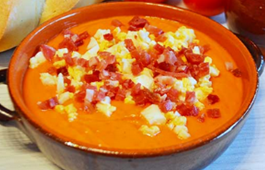 Salmorejo Cordobés, a cold tomato soup from Cordoba, is a fine example of Spain's influence on Latin American cuisine. Made with tomatoes, bread, garlic, and olive oil, this dish is nourishing and refreshing, highlighting the use of fresh, local ingredients – a common theme in Latin American cooking.
Salmorejo Cordobés, a cold tomato soup from Cordoba, is a fine example of Spain's influence on Latin American cuisine. Made with tomatoes, bread, garlic, and olive oil, this dish is nourishing and refreshing, highlighting the use of fresh, local ingredients – a common theme in Latin American cooking.
A Culinary Exploration of Guatemala, Equatorial Guinea, and Honduras
-
Guatemala: A Blend of Indigenous and Spanish Flavors
Guatemalan cuisine, a significant part of Latin American cuisine, offers a unique blend of indigenous and Spanish influences, creating a delightful fusion of tastes and traditions.
- Pepián: Guatemala’s Rich Stew
 Pepián, often considered the national dish of Guatemala, is a rich and hearty stew. It combines elements like meat (usually chicken), vegetables, and a complex mix of spices, reflecting the country's diverse cultural heritage. This dish is a wonderful example of how Latin American cuisine often uses various local ingredients to produce deep and satisfying flavors.
Pepián, often considered the national dish of Guatemala, is a rich and hearty stew. It combines elements like meat (usually chicken), vegetables, and a complex mix of spices, reflecting the country's diverse cultural heritage. This dish is a wonderful example of how Latin American cuisine often uses various local ingredients to produce deep and satisfying flavors.
- Bananas in Mole: A Sweet Twist
 Bananas in Mole, a unique Guatemalan dessert, showcases the innovative use of chocolate in Latin American cuisine. This dish, which combines ripe bananas with a rich, sweet, and slightly spicy chocolate sauce, is a testament to the region's creativity in culinary arts, blending the familiar with the unexpected to create truly distinctive flavors.
Bananas in Mole, a unique Guatemalan dessert, showcases the innovative use of chocolate in Latin American cuisine. This dish, which combines ripe bananas with a rich, sweet, and slightly spicy chocolate sauce, is a testament to the region's creativity in culinary arts, blending the familiar with the unexpected to create truly distinctive flavors.
-
Equatorial Guinea: Africa's Influence on Latin American Cuisine
Equatorial Guinea, the only Spanish-speaking country in Africa, has a cuisine that beautifully illustrates the influence of Africa on Latin American culinary traditions.
- Peanut Fish Soup: A Harmonious Blend
 Peanut Fish Soup is a standout dish in Equatorial Guinean cuisine. This soup, made with ground peanuts, fish, onions, and tomatoes, is a perfect example of how Latin American cuisine can encompass various flavors, demonstrating the interconnectedness of different culinary traditions.
Peanut Fish Soup is a standout dish in Equatorial Guinean cuisine. This soup, made with ground peanuts, fish, onions, and tomatoes, is a perfect example of how Latin American cuisine can encompass various flavors, demonstrating the interconnectedness of different culinary traditions.
- Succotash: A Versatile Favorite
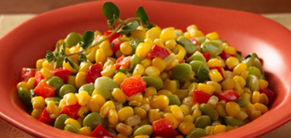 Succotash, a dish primarily consisting of sweet corn and broad beans, showcases the adaptability of Latin American cuisine. This dish, often enriched with ingredients like corned beef, potatoes, or tomatoes, reflects the region's ability to incorporate various influences into its culinary practices, creating versatile and appealing dishes.
Succotash, a dish primarily consisting of sweet corn and broad beans, showcases the adaptability of Latin American cuisine. This dish, often enriched with ingredients like corned beef, potatoes, or tomatoes, reflects the region's ability to incorporate various influences into its culinary practices, creating versatile and appealing dishes.
-
Honduras: A Taste of Central America
Honduran cuisine, emphasizing fresh ingredients and simple preparations, adds another dimension to Latin American cuisine's rich tapestry.
- Baleadas: A Honduran Staple
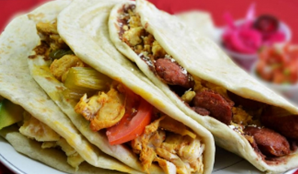 Baleadas, a simple yet beloved Honduran dish, consists of flour tortillas filled with beans, cheese, and other ingredients like avocado or scrambled eggs. This dish perfectly captures the essence of Latin American cuisine, where everyday ingredients are transformed into something comforting and delicious.
Baleadas, a simple yet beloved Honduran dish, consists of flour tortillas filled with beans, cheese, and other ingredients like avocado or scrambled eggs. This dish perfectly captures the essence of Latin American cuisine, where everyday ingredients are transformed into something comforting and delicious.
- Corn Atole: A Sweet Tradition
 Corn Atole, a sweet beverage made from corn, water, cinnamon, and sugar, is a classic Honduran treat. It embodies the sweet side of Latin American cuisine, offering a glimpse into the traditional drinks enjoyed for generations.
Corn Atole, a sweet beverage made from corn, water, cinnamon, and sugar, is a classic Honduran treat. It embodies the sweet side of Latin American cuisine, offering a glimpse into the traditional drinks enjoyed for generations.
Discovering the Culinary Jewels of Mexico, Nicaragua, and Panama
-
Mexico: The Heart of Latin American Cuisine
Mexican cuisine, arguably the most globally recognized among Latin American cuisines, offers an incredible diversity of flavors, ingredients, and dishes deeply rooted in indigenous and Spanish traditions.
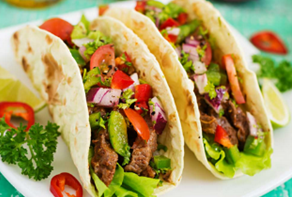 Tacos, the quintessential Mexican dish, embodies the spirit of Mexican cuisine with their simplicity and versatility. Made with soft corn tortillas filled with an endless variety of ingredients - from grilled meats to fresh vegetables - tacos represent the creativity and vibrancy of Mexican cooking. They testify to how Latin American cuisine can influence global culinary trends while maintaining its authentic flavors.
Tacos, the quintessential Mexican dish, embodies the spirit of Mexican cuisine with their simplicity and versatility. Made with soft corn tortillas filled with an endless variety of ingredients - from grilled meats to fresh vegetables - tacos represent the creativity and vibrancy of Mexican cooking. They testify to how Latin American cuisine can influence global culinary trends while maintaining its authentic flavors.
- Mole: A Symphony of Spices
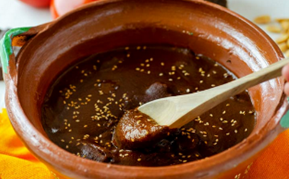 Mole, another iconic Mexican creation, is a complex sauce made with various spices, including chocolate, giving it a distinctive depth and richness. Often served over chicken, mole is a perfect example of the intricate flavors and culinary expertise that define Mexican cuisine and, by extension, Latin American cuisine.
Mole, another iconic Mexican creation, is a complex sauce made with various spices, including chocolate, giving it a distinctive depth and richness. Often served over chicken, mole is a perfect example of the intricate flavors and culinary expertise that define Mexican cuisine and, by extension, Latin American cuisine.
-
Nicaragua: A Blend of Traditional and Contemporary Flavors
Nicaraguan cuisine, while less known internationally, is a vital part of Latin American cuisine, offering traditional and uniquely Nicaraguan dishes.
- Nica Breakfast: A Hearty Start to the Day
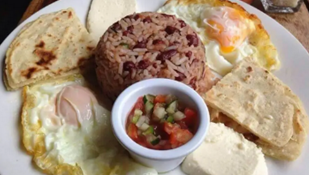 The Nica Breakfast is a testament to Nicaragua's love for hearty, satisfying meals. Typically including eggs, fried plantains, fresh cheese, and a pile of gallo pinto, it's a breakfast that energizes and delights, reflecting the importance of a strong communal meal in Latin American culture.
The Nica Breakfast is a testament to Nicaragua's love for hearty, satisfying meals. Typically including eggs, fried plantains, fresh cheese, and a pile of gallo pinto, it's a breakfast that energizes and delights, reflecting the importance of a strong communal meal in Latin American culture.
- Gallo Pinto: Nicaragua’s Twist on a Classic
 Gallo Pinto, a Nicaragua and Costa Rica staple, is a delightful mix of rice and beans. Nicaraguan gallo pinto often includes unique local ingredients, showcasing the country's culinary creativity and contribution to the diverse spectrum of Latin American cuisine.
Gallo Pinto, a Nicaragua and Costa Rica staple, is a delightful mix of rice and beans. Nicaraguan gallo pinto often includes unique local ingredients, showcasing the country's culinary creativity and contribution to the diverse spectrum of Latin American cuisine.
-
Panama: A Melting Pot of Culinary Influences
Panama, with its strategic location, has a cuisine influenced by a myriad of cultures, making it an integral part of the Latin American culinary landscape.
- Panamanian Chicken Stew: A Flavorful Comfort
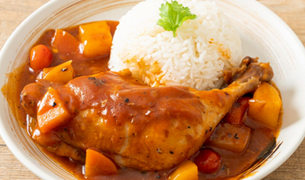 Panamanian Chicken Stew is a hearty and comforting dish with its mix of chicken, corn, and root vegetables like yams and cassava. Seasoned with herbs like cilantro, it showcases Panama's ability to blend local ingredients into heartwarming meals, a characteristic feature of Latin American cuisine.
Panamanian Chicken Stew is a hearty and comforting dish with its mix of chicken, corn, and root vegetables like yams and cassava. Seasoned with herbs like cilantro, it showcases Panama's ability to blend local ingredients into heartwarming meals, a characteristic feature of Latin American cuisine.
- Arroz con Pollo: A Panamanian Favorite
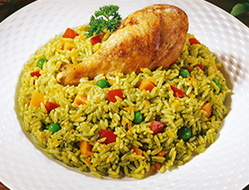 Arroz con Pollo, a dish reminiscent of Spanish paella, is a beloved Panamanian classic. This flavorful rice dish, mixed with chicken, vegetables, and spices, embodies the fusion of Spanish and indigenous cooking techniques, a hallmark of Latin American cuisine.
Arroz con Pollo, a dish reminiscent of Spanish paella, is a beloved Panamanian classic. This flavorful rice dish, mixed with chicken, vegetables, and spices, embodies the fusion of Spanish and indigenous cooking techniques, a hallmark of Latin American cuisine.
Conclusion
As we conclude our culinary tour of Latin American cuisine, it's clear that this vibrant culinary tradition is much more than just a collection of recipes.
Each dish we've explored, from Mexico's tantalizing tacos to Panama's hearty stews, tells a story of cultural fusion, rich history, and a deep love for flavorsome, hearty meals.
With its diverse ingredients and innovative cooking techniques, Latin American cuisine offers a window into the soul of its various cultures.
This gastronomic journey has highlighted the importance of food in bringing people together, celebrating heritage, and continuing culinary traditions.
Whether you're a seasoned foodie or a curious explorer, the rich tapestry of flavors in Latin American cuisine will inspire and delight your palate.
AyiConnect is a platform to connect families with helpers who have a language specialty in addition to care. You can post a free job to engage with them through self-service or use concierge service. For self-service, you can even join in the discussion. The concierge service can provide another option to ensure successful matches for busy families who don't have time to search or need language assistance. Schedule a free consultation here for our concierge service, or check us out at ayiconnection.com

